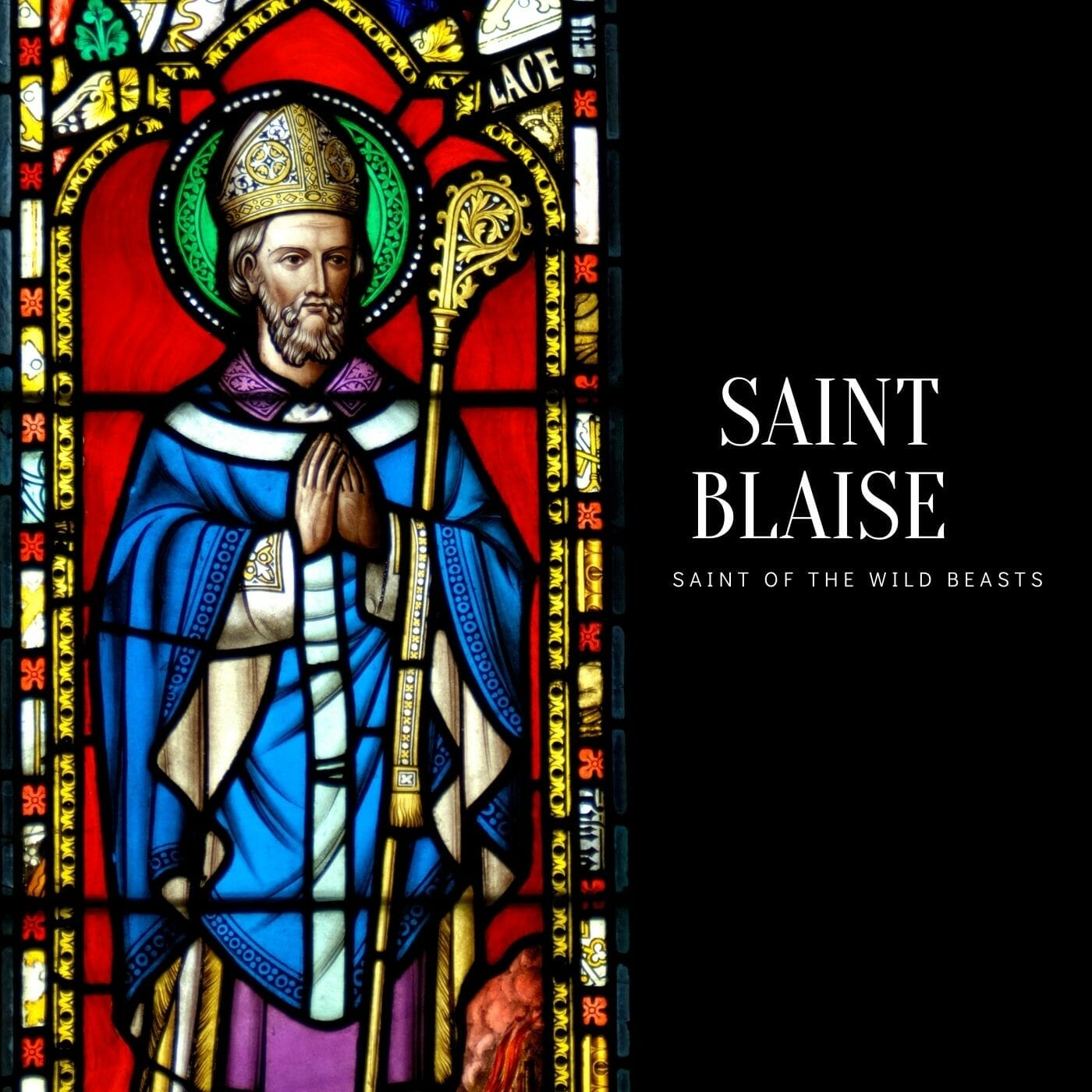Saint Blaise: Saint of the Wild Beasts
Today we celebrate the Feast of Saint Blaise, on February 3. It is said that Blaise was renowned as a wonderworker, effecting miraculous cures.
Blaise of Sebaste (Latin: Blasius) was a physician and bishop of Sebastea in historic Armenia (modern Sivas, Turkey) revered as a Christian saint and martyr. Saint Blaise is venerated as a saint in Catholic, Orthodox, and Eastern Orthodox Churches. In the Latin Church, their feast falls on February 3; in the Eastern Churches, February 11. According to the Acta Sanctorum, he was beaten, attacked with iron combs, and beheaded.
It is thought that he was a doctor who took care of his people spiritually and physically. The earliest mention of the Saint comes in the form of medical records.
Numerous miracles were attributed to him, including the cure of diseased beasts during his refuge, thus accounting for his also being the patron saint of wild animals. Moreover, he was venerated as the patron of sufferers from throat diseases in the East by the 6th century and in the West by the 9th century.
The Saint That Understood the Animals
Another story says that as Bishop Blaise was being taken to prison, he met an old woman whose little pig had been stolen by a wolf. The Wolf Complied and Returned The Piglet to Its Owner – A Credit to the Bishop’s Power of Persuasion. Moreover, the Wolf returned the pig to the woman – alive!
The woman would later return the favor to Saint Blaise when he was finally captured and imprisoned. In addition, it is believed that the same woman brought him two wax candles to illuminate his dank and dreamy cell.
Today the Church remembers the life and witness of Saint Blaise, the 3rd-century Armenian bishop who hardened terrifying torments and surrendered his life rather than repudiate his profession of Faith.
Much of the life of Saint Blaise is history that has passed into legend. Still, even these legendary accounts offer spiritual insight.
Here is an account of Saint Blaise that has confirmed his pastoral care for him for the Christian faith and the animals of the wilderness.
Saint Blaise as the New Adam
This legend hints at how the saints represent, in his Pious holiness, the restoration of a paradise lost and regained in Christ.
The ease and familiarity with which the Biblical Adam shared with nature before the fall is recapitulated in Saint Blaise. The Holy Man is a sign of restoring all things in Christ where the lion will rest with the lamb. In this case, the Wolf will return stolen property to its rightful owner.
From a healer of bodily ailments, Saint Blaise became a doctor of souls, then retired for a time to a cave where he remained in prayer.
As bishop of Sebastea, Saint Blaise instructed his people both by his example and his words. The great virtues and holiness of the servant of God were attested to by many miracles. From all over, people flocked to him for the cure of physical and spiritual illnesses. He also healed many animals—some wild other domestic The Stories tell that those animals came to the Saint on their own to help him when he needed. Despite being a saint, he was greatly helped by the animals.





